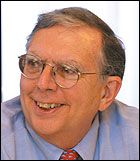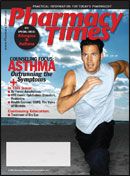Publication
Article
Pharmacy Times
Editor's Note: Are We Getting Too Many Pharmacists?
Author(s):
Growth in new graduates, coupled with pharmacists not retiring as early, may mean that we are on the verge of too many pharmacists.
Mr. Eckel is a professor and director ofthe Office of Practice Development andEducation at the School of Pharmacy,University of North Carolina at ChapelHill.

In my January 2005 commentary, I expressed concern that the increased use of technology and mail order could produce an oversupply of pharmacists in the future. At the time, most did not agree with this possibility. Has the situation changed today?
In March, I talked with 2 fourth-year pharmacy students from 2 different schools who did not have a job offer yet. A pharmacist recently called me looking for a job, because the chain where she had been working as a floater had only offered her several shifts in the last month. I had a conversation with a pharmacy school dean who told me that the discussion in his circle of educators is that the shortage is over. A chain pharmacy executive said that for the first time, they are getting calls about job availability, rather than having to go out to find candidates.
We know that the expansion plans of some chain pharmacies have stalled. We also have been told that patients are not taking as many drugs and that prescription volumes are declining in some settings, requiring fewer pharmacists to staff the operation. At least one chain is looking at using a central-fill approach to handle prescription volume where that is allowed, because this method requires fewer pharmacists. Other chains are using technology to balance workload.
Are these events simply related to the current economic climate? When the economy has recovered will things go back to business as usual? Another possibility is that fewer pharmacists will be involved in the order-fulfillment process. I think the latter situation is what will happen.
Some have suggested that the economy can explain the apparent adequate supply of pharmacists. It is not the only reason, however. The other factor is that the recent explosion of new pharmacy schools has produced enough new pharmacists entering the workforce to meet the demand. This growth in new graduates, coupled with pharmacists not retiring as early, means that we are now on the verge of too many pharmacists. Although the profession cannot prevent a university from opening a new pharmacy school, this may not be a wise decision for the university or the profession. Time will tell if my observations are accurate.







